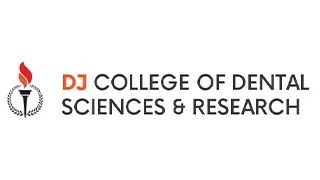- Visibility 311 Views
- Downloads 427 Downloads
- Permissions
- DOI 10.18231/j.johs.v.12.i.2.5
-
CrossMark
- Citation
Evaluating the content of AI-generated (ChatGPT) responses on clear retainers
Objective: To evaluate the correctness of ChatGPT’s answers pertaining to clear retainers in orthodontics.
Materials and Methods: This study conducted a cross-sectional analysis of content of responses by ChatGPT for a set of questions about clear retainers. A total of 58 questions were created by an orthodontist, based on particular domains and within them, particular subdomains. The content generated by AI were independently assessed for accuracy by two orthodontists. A pre-piloted four-point scale was used to rate the answers. Descriptive statistical assessment was carried out on the data.
Results: The cumulative mean score reflecting the accuracy of the full dataset was (1.70 ± 0.53). Approximately 67% of the AI-produced responses were assigned a rating of objectively true, 29% consisted of selected facts, while 4% fell under the category of minimal facts. Inaccurate information provided by ChatGPT was about patient-reported adverse effects (2.25 ± 0.5), microbiological composition (3 ± 0), knowledge, information, and satisfaction (2 ± 0.64), and patient-clinician relationship (2.25 ± 0.95).
Conclusion: ChatGPT's responses to clear retainer-related questions were frequently inaccurate and lacked citations to reliable sources. The AI also had limitations in providing current and precise information. Because of this, clinicians and patients should approach its answers with caution, as they may contain errors or omit crucial details.
References
- Brown T, Mann B, Ryder N, Subbiah M, Kaplan JD, Dhariwal P. etal. Language models are few-shot learners. Advances in neural information processing systems. 2020;33:1877-901.
- Deng J, Lin Y. The benefits and challenges of ChatGPT: An overview. Benefits. 2023;2(2):2022.
- Shen Y, Heacock L, Elias J, Hentel KD, Reig B, Shih G, et al. ChatGPT and other large language models are double-edged swords. Radiology. 2023;307(2):e230163.
- Vaid NR. Artificial Intelligence (AI) driven orthodontic care: A quest toward utopia?. Semin Orthod. 2021;27(2):57-61.
- Tsichlaki A, O'Brien K, Johal A, Fleming PS. Orthodontic trial outcomes: plentiful, inconsistent, and in need of uniformity? A scoping review. Am J Orthod Dentofac Orthoped. 2018;153(6):797-
- Alkadhimi A, Al-Moghrabi D, Fleming PS. The nature and accuracy of Instagram posts concerning marketed orthodontic products: A cross-sectional analysis. Angle Orthod. 2022;92(2):247-54.
- Husain S, Shantha S, Jain RK, Balasubramaniam A. Vacuum- formed retainers versus lingual-bonded retainers: a systematic review and meta-analysis of stability of treatment outcomes in orthodontically treated patients. Turk Orthod. 2022;35(4):307.
- Westerlund A, Daxberg EL, Liljegren A, Oikonomou C, Ransjö M, Samuelsson O. et al. Stability and side effects of orthodontic retainers-a systematic review. Dent. 2014;4(9):1.
- Rody W Jr, Elmaraghy S, McNeight A, Chamberlain C, Antal D, Dolce C, Wheeler T, McGorray S, Shaddox L. Effects of different orthodontic retention protocols on the periodontal health of mandibular incisors. Orthod Craniofac Res. 2016;19(4):198–208.
- Medina MC, SANTOS CC, Lima BO, Ferreira MB, Normando D. Impact of fixed orthodontic retainers on oral health-related quality of life: a longitudinal prospective study. Dent Press J Orthod. 2024;29(01):e242317.
- Lyros I, Tsolakis IA, Maroulakos MP, Fora E, Lykogeorgos T, Dalampira M, Tsolakis AI. Orthodontic retainers—a critical review. Children. 2023;10(2):230.
- Wang D, Zhang S. Large language models in medical and healthcare fields: applications, advances, and challenges. Artific Intellig Rev. 2024;57(11):299.
- Ray PP. ChatGPT: A comprehensive review on background, applications, key challenges, bias, ethics, limitations and future scope. Inter Things Cyber-Physical Syst. 2023; 3:121-54.
- González Barman K, Lohse S, de Regt HW. Reinforcement Learning from Human Feedback in LLMs: Whose Culture, Whose Values, Whose Perspectives? Philosophy Technol. 2025;38(2):1-26.
- Wang C, Liu S, Yang H, Guo J, Wu Y, Liu J. Ethical considerations of using ChatGPT in health care. J Med Internet Res. 2023;25: e48009.
- Medina MC, SANTOS CC, Lima BO, Ferreira MB, Normando D. Impact of fixed orthodontic retainers on oral health-related quality of life: a longitudinal prospective study. Dent Press J Orthod. 2024;29(01):e242317.
- Neoh SP, Khantachawana A, Chintavalakorn R, Santiwong P, Srikhirin T. Comparison of physical, mechanical, and optical properties between thermoplastic materials and 3-dimensional printing resins for orthodontic clear retainers. Am J Orthod Dentofac Orthop. 2025;167(1):95-109.
- Chaimongkol P, Suntornlohanakul S. Clear retainer. APOS Trend Orthod. 2017;7(1):54.
How to Cite This Article
Vancouver
Raichura K, Hattari R, Thomas N. Evaluating the content of AI-generated (ChatGPT) responses on clear retainers [Internet]. J Orofac Health Sci. 2025 [cited 2025 Oct 23];12(2):102-108. Available from: https://doi.org/10.18231/j.johs.v.12.i.2.5
APA
Raichura, K., Hattari, R., Thomas, N. (2025). Evaluating the content of AI-generated (ChatGPT) responses on clear retainers. J Orofac Health Sci, 12(2), 102-108. https://doi.org/10.18231/j.johs.v.12.i.2.5
MLA
Raichura, Krish, Hattari, Rohan, Thomas, Neha. "Evaluating the content of AI-generated (ChatGPT) responses on clear retainers." J Orofac Health Sci, vol. 12, no. 2, 2025, pp. 102-108. https://doi.org/10.18231/j.johs.v.12.i.2.5
Chicago
Raichura, K., Hattari, R., Thomas, N.. "Evaluating the content of AI-generated (ChatGPT) responses on clear retainers." J Orofac Health Sci 12, no. 2 (2025): 102-108. https://doi.org/10.18231/j.johs.v.12.i.2.5
